A dual effect of ursolic acid to the treatment of multiple sclerosis through both immunomodulation and direct remyelination
- PMID: 32253301
- PMCID: PMC7183235
- DOI: 10.1073/pnas.2000208117
A dual effect of ursolic acid to the treatment of multiple sclerosis through both immunomodulation and direct remyelination
Abstract
Current multiple sclerosis (MS) medications are mainly immunomodulatory, having little or no effect on neuroregeneration of damaged central nervous system (CNS) tissue; they are thus primarily effective at the acute stage of disease, but much less so at the chronic stage. An MS therapy that has both immunomodulatory and neuroregenerative effects would be highly beneficial. Using multiple in vivo and in vitro strategies, in the present study we demonstrate that ursolic acid (UA), an antiinflammatory natural triterpenoid, also directly promotes oligodendrocyte maturation and CNS myelin repair. Oral treatment with UA significantly decreased disease severity and CNS inflammation and demyelination in experimental autoimmune encephalomyelitis (EAE), an animal model of MS. Importantly, remyelination and neural repair in the CNS were observed even after UA treatment was started on day 60 post immunization when EAE mice had full-blown demyelination and axonal damage. UA treatment also enhanced remyelination in a cuprizone-induced demyelination model in vivo and brain organotypic slice cultures ex vivo and promoted oligodendrocyte maturation in vitro, indicating a direct myelinating capacity. Mechanistically, UA induced promyelinating neurotrophic factor CNTF in astrocytes by peroxisome proliferator-activated receptor γ(PPARγ)/CREB signaling, as well as by up-regulation of myelin-related gene expression during oligodendrocyte maturation via PPARγ activation. Together, our findings demonstrate that UA has significant potential as an oral antiinflammatory and neural repair agent for MS, especially at the chronic-progressive stage.
Keywords: immunomodulation; multiple sclerosis; neural repair; ursolic acid.
Conflict of interest statement
The authors declare no competing interest.
Figures


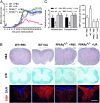

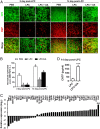
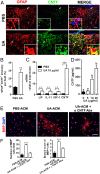
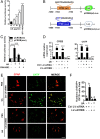
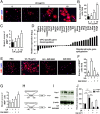

Similar articles
-
ACT-1004-1239, a first-in-class CXCR7 antagonist with both immunomodulatory and promyelinating effects for the treatment of inflammatory demyelinating diseases.FASEB J. 2021 Mar;35(3):e21431. doi: 10.1096/fj.202002465R. FASEB J. 2021. PMID: 33595155 Free PMC article.
-
Nudging oligodendrocyte intrinsic signaling to remyelinate and repair: Estrogen receptor ligand effects.J Steroid Biochem Mol Biol. 2016 Jun;160:43-52. doi: 10.1016/j.jsbmb.2016.01.006. Epub 2016 Jan 14. J Steroid Biochem Mol Biol. 2016. PMID: 26776441 Free PMC article. Review.
-
rHIgM22 enhances remyelination in the brain of the cuprizone mouse model of demyelination.Neurobiol Dis. 2017 Sep;105:142-155. doi: 10.1016/j.nbd.2017.05.015. Epub 2017 May 30. Neurobiol Dis. 2017. PMID: 28576706
-
FGF/FGFR Pathways in Multiple Sclerosis and in Its Disease Models.Cells. 2021 Apr 13;10(4):884. doi: 10.3390/cells10040884. Cells. 2021. PMID: 33924474 Free PMC article. Review.
-
Thymosin beta4 promotes oligodendrogenesis in the demyelinating central nervous system.Neurobiol Dis. 2016 Apr;88:85-95. doi: 10.1016/j.nbd.2016.01.010. Epub 2016 Jan 12. Neurobiol Dis. 2016. PMID: 26805386
Cited by
-
Silybin Alleviates Experimental Autoimmune Encephalomyelitis by Suppressing Dendritic Cell Activation and Th17 Cell Differentiation.Front Neurol. 2021 Sep 7;12:659678. doi: 10.3389/fneur.2021.659678. eCollection 2021. Front Neurol. 2021. PMID: 34557140 Free PMC article.
-
Polyploidy underlies co-option and diversification of biosynthetic triterpene pathways in the apple tribe.Proc Natl Acad Sci U S A. 2021 May 18;118(20):e2101767118. doi: 10.1073/pnas.2101767118. Proc Natl Acad Sci U S A. 2021. PMID: 33986115 Free PMC article.
-
Deciphering Neuroprotective Effect of Rosmarinus officinalis L. (syn. Salvia rosmarinus Spenn.) through Preclinical and Clinical Studies.Curr Drug Targets. 2024;25(5):330-352. doi: 10.2174/0113894501255093240117092328. Curr Drug Targets. 2024. PMID: 38258779 Review.
-
Phloretin enhances remyelination by stimulating oligodendrocyte precursor cell differentiation.Proc Natl Acad Sci U S A. 2022 Nov 16;119(46):e2120393119. doi: 10.1073/pnas.2120393119. Epub 2022 Nov 7. Proc Natl Acad Sci U S A. 2022. PMID: 36343243 Free PMC article.
-
Impact of calcitriol and PGD2-G-loaded lipid nanocapsules on oligodendrocyte progenitor cell differentiation and remyelination.Drug Deliv Transl Res. 2024 Nov;14(11):3128-3146. doi: 10.1007/s13346-024-01535-8. Epub 2024 Feb 16. Drug Deliv Transl Res. 2024. PMID: 38366115
References
-
- Tintore M., Vidal-Jordana A., Sastre-Garriga J., Treatment of multiple sclerosis: Success from bench to bedside. Nat. Rev. Neurol. 15, 53–58 (2019). - PubMed
-
- Correale J., Gaitán M. I., Ysrraelit M. C., Fiol M. P., Progressive multiple sclerosis: From pathogenic mechanisms to treatment. Brain 140, 527–546 (2017). - PubMed
-
- Stangel M., Kuhlmann T., Matthews P. M., Kilpatrick T. J., Achievements and obstacles of remyelinating therapies in multiple sclerosis. Nat. Rev. Neurol. 13, 742–754 (2017). - PubMed
Publication types
MeSH terms
Substances
Grants and funding
LinkOut - more resources
Full Text Sources
Medical

